Non-woven fabric, also known as non-woven fabric, is composed of oriented or random fibers. It is called cloth because of its appearance and certain properties.
Simply put: it is not interwoven and braided by individual yarns, but the fibers are directly bonded together by physical or chemical methods, so when you get the glue in your clothes When weighing, you will find that you can't pull out the end of the thread.
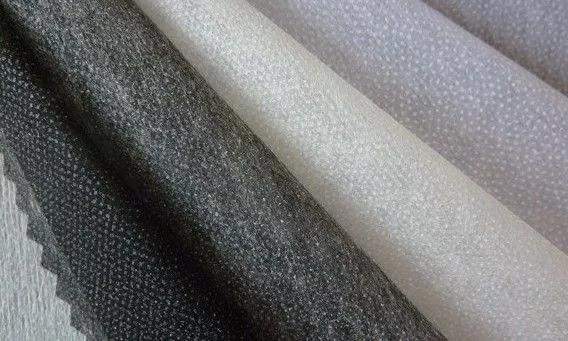
Features of non-woven fabric
The non-woven fabric has no warp and weft, so it is very convenient to cut and sew, and it is light and easy to set. Non-woven fabric breaks through the traditional textile principle, and has the characteristics of short process flow, fast production rate, high output, low cost, wide use, and many raw material sources.
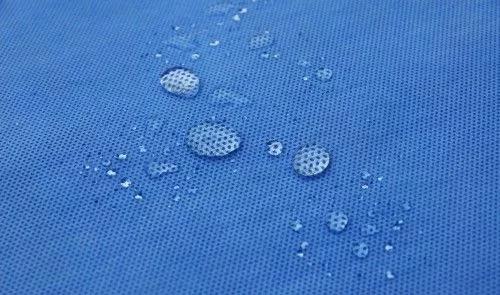
Compared with woven cloth, the strength and durability are poor, and it cannot be washed like other cloths. Because the fibers are arranged in a certain direction, it is easy to split from the right angle, etc., so the improvement of the production method is mainly placed on the improvement to prevent splitting.
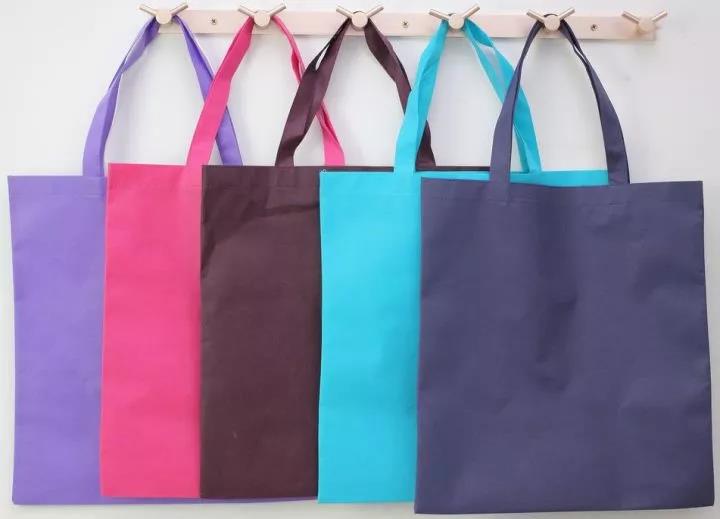
The classification of non-woven fabrics
Non-woven fabrics can be divided into:
◆ Spunlace non-woven fabric
It is to spray high-pressure micro-water flow onto one or more layers of fiber mesh, so that the fibers are entangled with each other, so that the fiber mesh is strengthened and has a certain strength.
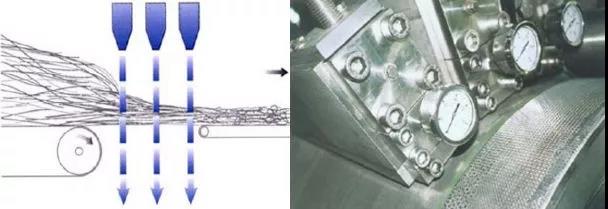
Features:
1. Flexible entanglement does not affect the original characteristics of the fiber and does not damage the fiber.
2. The appearance is closer to traditional textiles.
3. High strength and low fuzziness.
4. High hygroscopicity and quick moisture absorption.
5. Feel soft and drape.
6. Changeable appearance.
7. The production process is long and covers a large area.
8. Complex equipment, large energy consumption and high water quality requirements.
Product applications:
medical curtains, surgical gowns, surgical covers, medical dressing materials, wound dressings, medical gauze, aviation wipes, clothing lining cloths, coated base cloths, advanced rags for the electronics industry, cotton pads, wipes, masks Materials etc.
◆ Heating non-woven fabric
It refers to adding fibrous or powdery hot-melt adhesive reinforcement materials to the fiber web, and then heating, melting and cooling to strengthen the fiber web into a cloth.
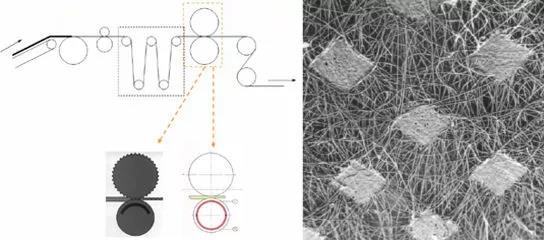
Features:
surface bonding hot rolled surface is relatively smooth, point bonding hot rolled is relatively fluffy.
Product application:
production of baby diapers and feminine sanitary napkin covering materials, ointment base cloth, clothing lining, masks, etc.
◆ Pulp airlaid non-woven fabric
It can also be called dust-free paper, dry paper-making non-woven fabric. It uses the air-laid technology to open the wood pulp fiber board into a single fiber state, and then uses the air-flow method to condense the fibers on the screen forming curtain, and then the fiber web is consolidated into a cloth.
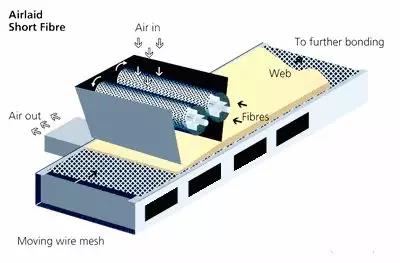
Features:
good fluffiness, soft hand feeling, and super hygroscopic performance.
Product application:
medical hygiene materials, especially high-absorbency disposable hygiene products (such as diapers, sanitary napkins, wet facial towels, wipes, etc.).
◆ Wet non-woven fabric
The fiber raw material placed in the aqueous medium is opened into single fibers, and different fiber raw materials are mixed at the same time to form a fiber suspension slurry, and the suspension slurry is transported to the net forming mechanism, and the fibers are netted in a wet state and then consolidated into a cloth.
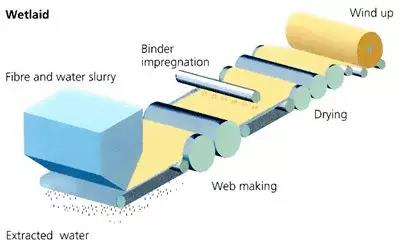
Features:
1. High production speed, can reach 400m / min.
2. Can make full use of short fibers.
3. The product web uniformity is good.
4. Large water consumption and high one-time investment.
Applications:
1. Special paper: dust / liquid filter paper, tea bags.
2. Industrial use: filters, insulating materials, sound-absorbing materials.
3. Medical use: medical backing, medical tape, surgical wrap material.
4. Civil: wallpaper etc.
◆ Spunbond non-woven fabric
After the polymer has been extruded and stretched to form continuous filaments, the filaments are laid into a net, and the web is then subjected to self-adhesive, thermal bonding, chemical bonding or mechanical reinforcement methods to make the web into no Spinning.
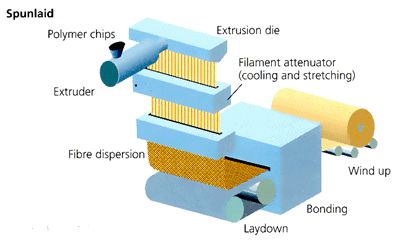
Features:
1. The web consists of continuous filaments.
2. Excellent tensile strength.
3. There are many process changes, and various methods can be used for reinforcement.
4. Wide range of filament fineness.
Applications:
1. Polypropylene (PP): geotextile, tufted carpet base fabric, coated base fabric, medical materials, covering materials for disposable products, etc.
2. Polyester (PET): filter materials, lining materials, tufted carpet base fabric, agricultural materials, packaging materials, etc.
◆ Melt-blown non-woven fabric
The process of melt-blown non-woven fabric: polymer feeding --- melt extrusion --- fiber formation --- fiber cooling --- netting --- reinforcement into cloth.
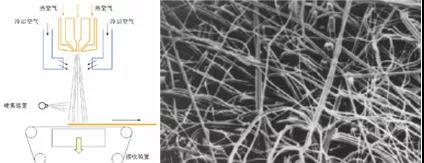
Features:
1. The fiber web is composed of very thin short fibers.
2. The web has good uniformity and soft feel.
3. Good filtration performance and liquid absorption performance.
4. The web strength is poor.
Product application:
filter materials, medical and health materials, clothing materials, battery separator materials, wiping materials.
◆ Needled non-woven fabric
It is a kind of dry non-woven fabric. Needle-punched non-woven fabric uses the puncture effect of the needle to strengthen the fluffy web into a cloth.
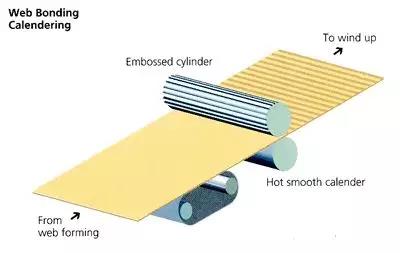
Features:
1. Flexible entanglement between fibers, with good dimensional stability and elasticity.
2. Good permeability and filtration performance.
3. Feel full and fluffy.
4. Can produce various set patterns or three-dimensional molding products according to requirements.